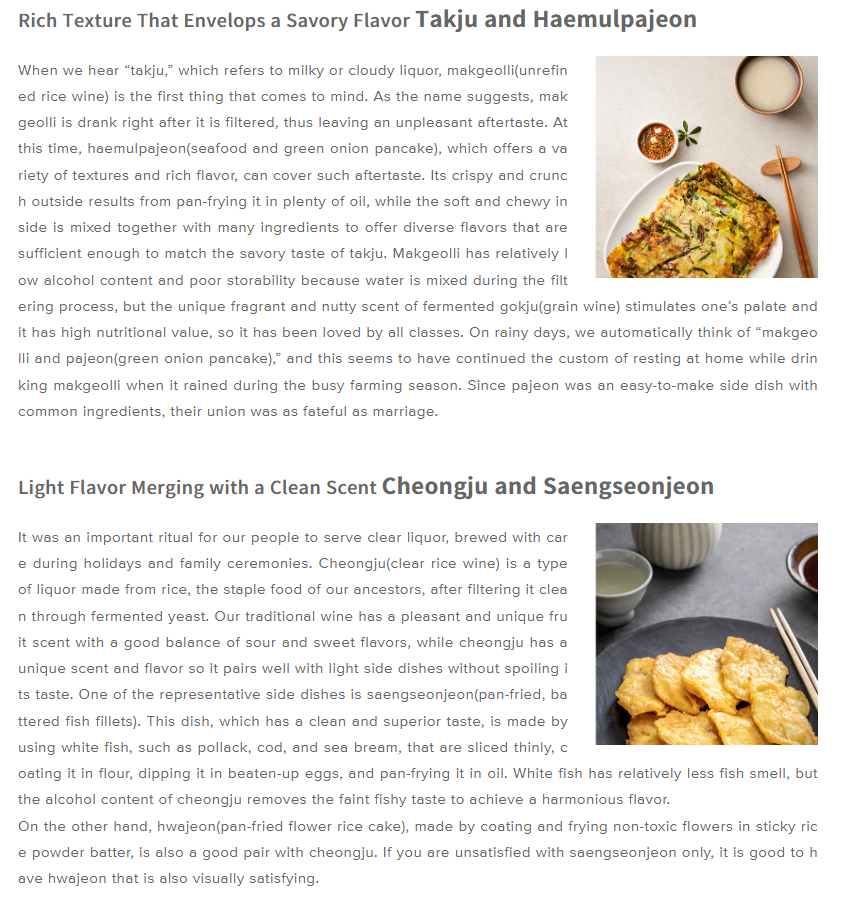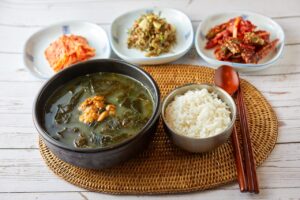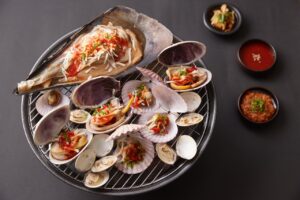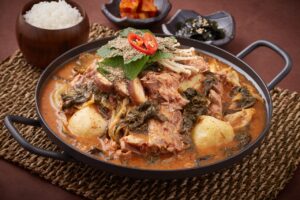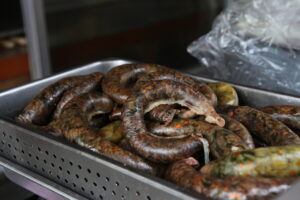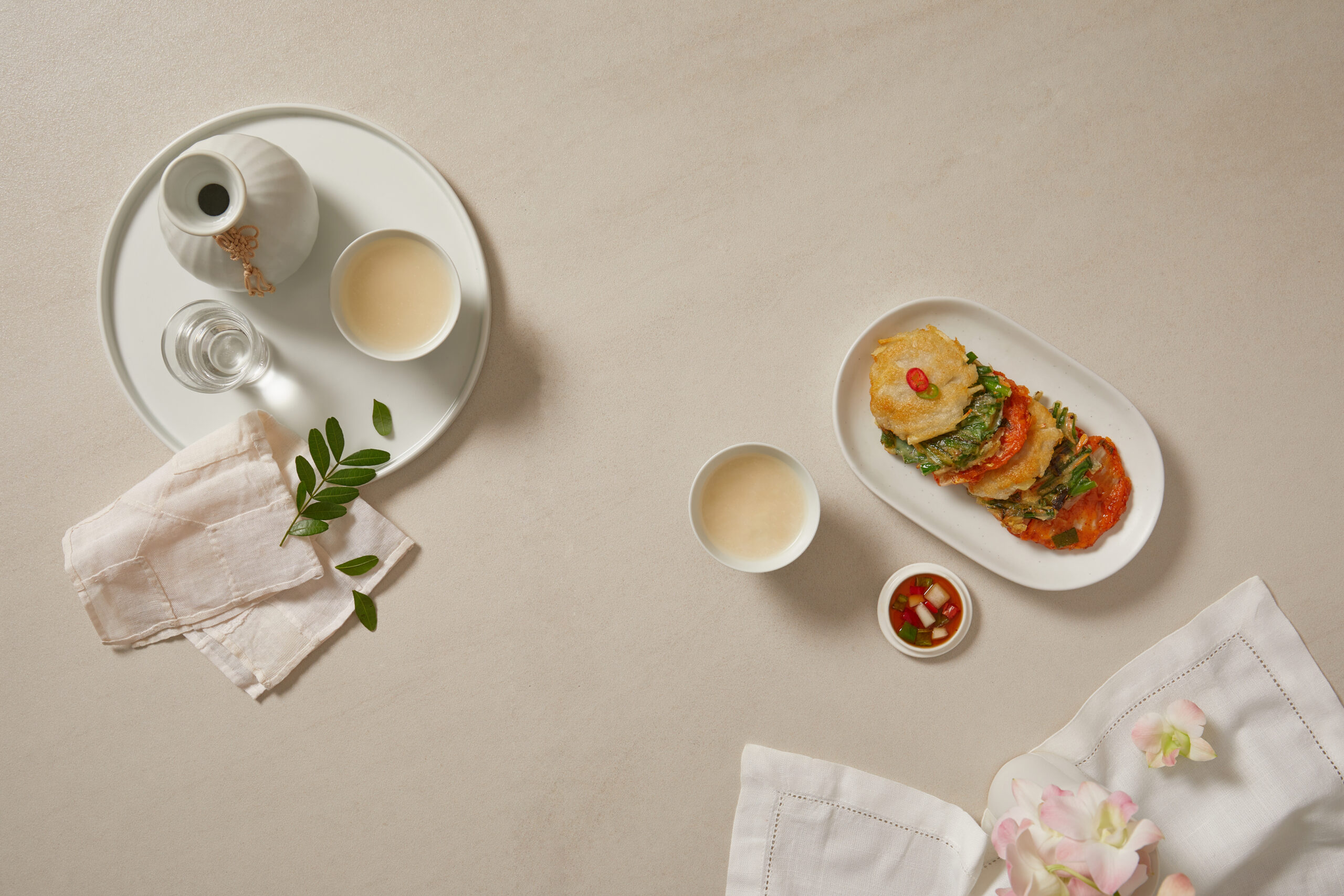
Makgeolli is traditional Korean Liquor
Makgeolli (막걸리) is a traditional Korean alcoholic beverage that has been enjoyed for centuries. It’s often referred to as “rice wine,” although it’s more accurately categorized as a type of fermented rice or grain-based alcohol. Makgeolli is known for its slightly sweet and tangy flavor, cloudy appearance, and relatively low alcohol content compared to other alcoholic beverages.
Here’s a closer look at Makgeolli:
Ingredients and Fermentation: Makgeolli is primarily made from rice, although other grains like wheat or barley can also be used. The grains are first cooked and then mixed with nuruk, a fermentation starter that contains enzymes and yeasts. The mixture is left to ferment, which results in the conversion of starches into sugars and the production of alcohol.
Flavor and Appearance: Makgeolli has a distinctive milky or cloudy appearance due to the presence of rice particles and yeast sediment. The flavor profile of Makgeolli is often described as mildly sweet, slightly tangy, and sometimes effervescent. The taste can vary depending on factors like the type of rice used, the fermentation process, and any additional flavorings or additives.
Alcohol Content: Makgeolli typically has an alcohol content ranging from about 6% to 8%, making it relatively mild compared to other alcoholic beverages like soju or beer.
Serving and Consumption: Makgeolli is usually served chilled and stirred before drinking to evenly distribute the sediment. It’s traditionally poured from a large bowl or jar into small individual cups. In Korean culture, Makgeolli is often enjoyed with a variety of savory and spicy dishes, as its slightly sweet and tangy profile pairs well with Korean cuisine.
Variations and Additions: Modern variations of Makgeolli may include additional ingredients for flavor, such as fruits, herbs, or honey. These variations can create a wide range of flavors and experiences beyond the traditional base Makgeolli.
Cultural Significance: Makgeolli has a cultural significance in Korea and is associated with social gatherings, celebrations, and traditional rituals. It’s also part of the country’s intangible cultural heritage.
Makgeolli’s popularity has grown beyond Korea’s borders, and it’s enjoyed by both locals and foreigners. If you have the chance to try it, Makgeolli offers a unique taste of Korean culinary and cultural heritage.
How to make Makgeolli?
Making Makgeolli at home involves a fermentation process that converts rice or other grains into a slightly sweet and tangy alcoholic beverage. Here’s a simplified recipe for making Makgeolli:
Ingredients:
- 2 cups of short-grain rice (or glutinous rice)
- 4 cups of water (for cooking rice)
- 1/2 cup of nuruk (Korean fermentation starter)
- 1/2 cup of water (for mixing with nuruk)
- Sugar (optional, for adjusting sweetness)
- Clean and sanitized fermentation vessel (glass jar or ceramic crock)
- Cheesecloth or clean cloth for covering
Instructions:
- Prepare the Rice:
- Rinse the rice under cold water until the water runs clear.
- Cook the rice with 4 cups of water until it’s fully cooked and slightly sticky.
- Cool the Rice:
- Let the cooked rice cool down to room temperature. It should be warm but not hot.
- Mix Nuruk and Water:
- In a separate bowl, mix the nuruk with 1/2 cup of water to create a paste. Nuruk contains enzymes and yeasts that initiate fermentation.
- Combine Rice and Nuruk Mixture:
- In a clean and sanitized fermentation vessel, combine the cooled rice and the nuruk mixture. Mix well to evenly distribute the nuruk.
- Cover and Ferment:
- Cover the vessel with cheesecloth or a clean cloth, securing it with a rubber band or string.
- Place the vessel in a warm, dark, and relatively undisturbed location to ferment. The ideal temperature is around 20-25°C (68-77°F).
- Fermentation:
- Fermentation will occur over the next few days. During this time, the mixture will become slightly bubbly and cloudy as the yeast activates.
- Strain and Store:
- After about 3-5 days, strain the liquid through a fine mesh strainer or cheesecloth to remove the rice solids. This will result in the cloudy Makgeolli liquid.
- Adjust Sweetness (Optional):
- Taste the Makgeolli and if desired, add sugar to adjust the sweetness to your preference. Stir until the sugar is dissolved.
- Bottle and Refrigerate:
- Transfer the Makgeolli to clean, airtight bottles or jars. Seal the containers and refrigerate them to slow down fermentation and maintain freshness.
- Serve and Enjoy:
- Once chilled, your homemade Makgeolli is ready to be served. Remember to gently stir before pouring to mix any sediment that settles.
Note that making Makgeolli at home involves a fermentation process that may require careful attention and sanitation. While this recipe provides a general guideline, variations in temperature, ingredients, and fermentation time can lead to different outcomes. If you’re new to fermentation, you might want to start with a small batch and familiarize yourself with the process before attempting larger batches.
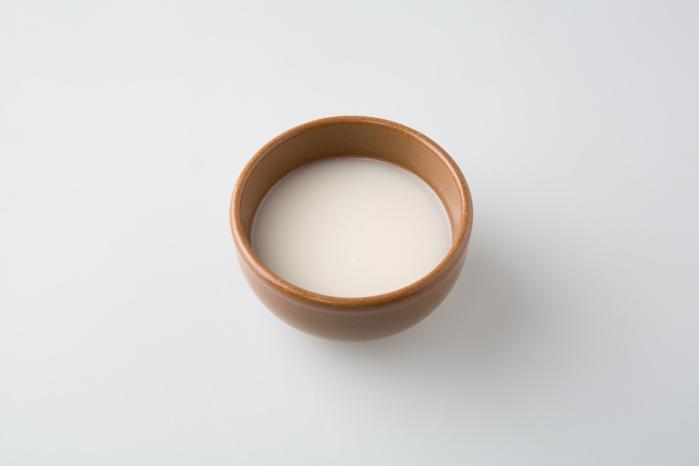
Which Food does Makgeolli go well with?
Makgeolli, with its slightly sweet and tangy flavor profile, pairs well with a variety of Korean dishes. Its versatility makes it a popular choice for enjoying with different types of foods. Here are some types of dishes that Makgeolli goes well with:
- Jeon (전): Jeon refers to a variety of Korean savory pancakes. These can be made with ingredients like vegetables, seafood, or kimchi. The crispy texture and savory flavors of jeon complement the slightly sweet and tangy notes of Makgeolli.
- Pajeon (파전): Pajeon specifically refers to green onion pancakes. The combination of green onions and Makgeolli is a classic pairing, as the refreshing flavor of green onions contrasts nicely with the drink.
- Tteokbokki (떡볶이): Tteokbokki, or spicy rice cakes, features chewy rice cakes in a spicy sauce. The mild sweetness of Makgeolli can help balance out the heat and spiciness of tteokbokki.
- Twigim (튀김): Twigim is a term for various Korean fried snacks, such as fried vegetables, fish cakes, or even tempura-style dishes. The crispy texture of fried foods contrasts well with the drink’s smoothness.
- Mandu (만두): Mandu are Korean dumplings, often filled with a mixture of meat and vegetables. The savory flavors of mandu are complemented by the slightly sweet and tangy Makgeolli.
- Jokbal (족발): Jokbal is a Korean dish consisting of pig’s trotters that are cooked until tender. The rich and savory flavors of jokbal can be nicely balanced by the drink’s acidity.
- Anju (안주): Anju are Korean snacks or appetizers often enjoyed with alcoholic beverages. A wide range of anju, including dried squid, peanuts, and other savory bites, can be paired with Makgeolli.
- Bindaetteok (빈대떡): Bindaetteok, or mung bean pancakes, have a crispy exterior and soft interior. The earthy flavors of bindaetteok complement the Makgeolli’s taste.
- Kimchi (김치): Kimchi, a staple in Korean cuisine, can be enjoyed alongside Makgeolli. The fermented and spicy flavors of kimchi harmonize well with the drink’s tanginess.
- Banchan (반찬): Banchan are various side dishes served in Korean cuisine. Makgeolli can be enjoyed with a selection of banchan, providing a range of flavors and textures to explore.
Remember that personal preferences vary, so feel free to experiment and discover your own favorite pairings. The goal is to find a balance that enhances your enjoyment of both the food and the drink.
Mariage of Traditional Liguor and Korean Jeon (from Hansikmagazine.org)
